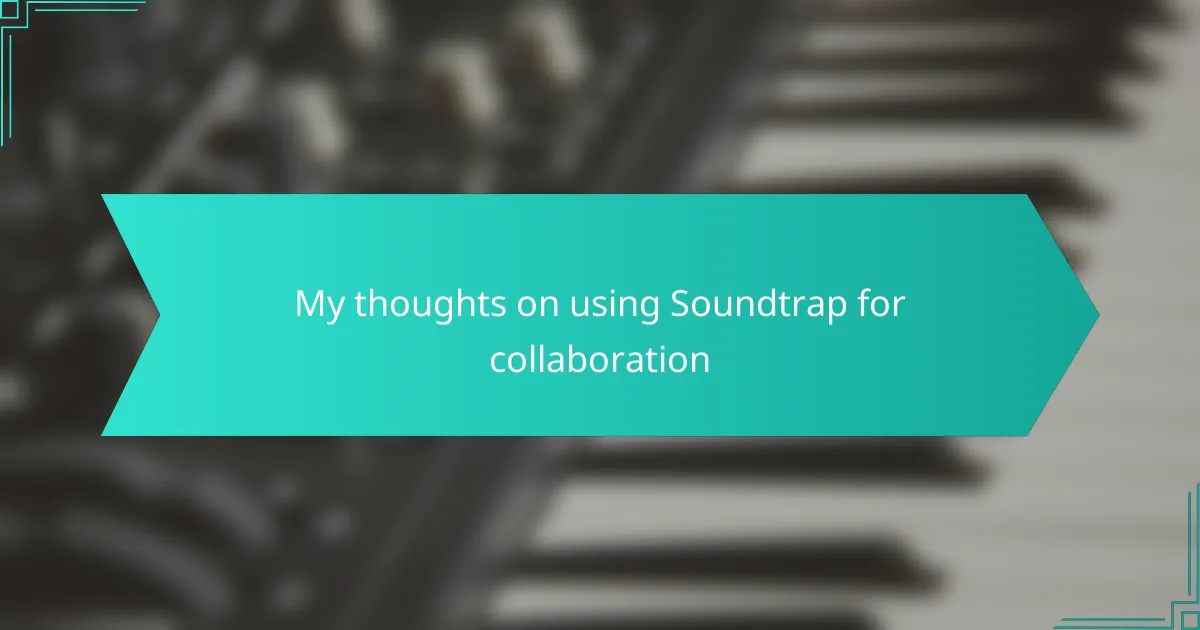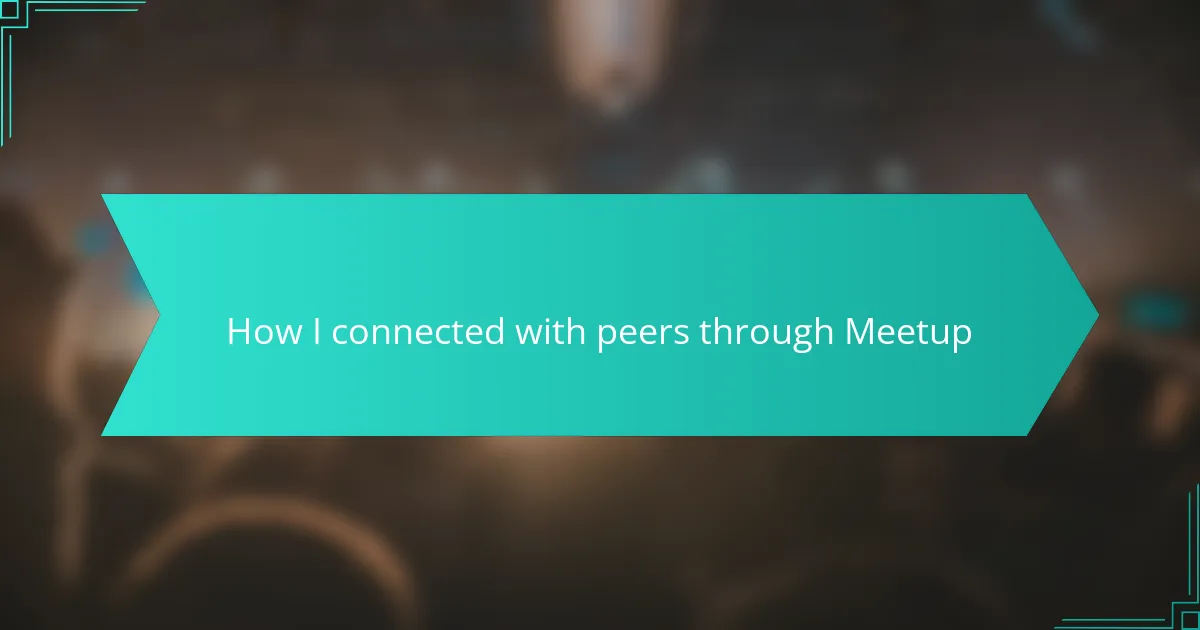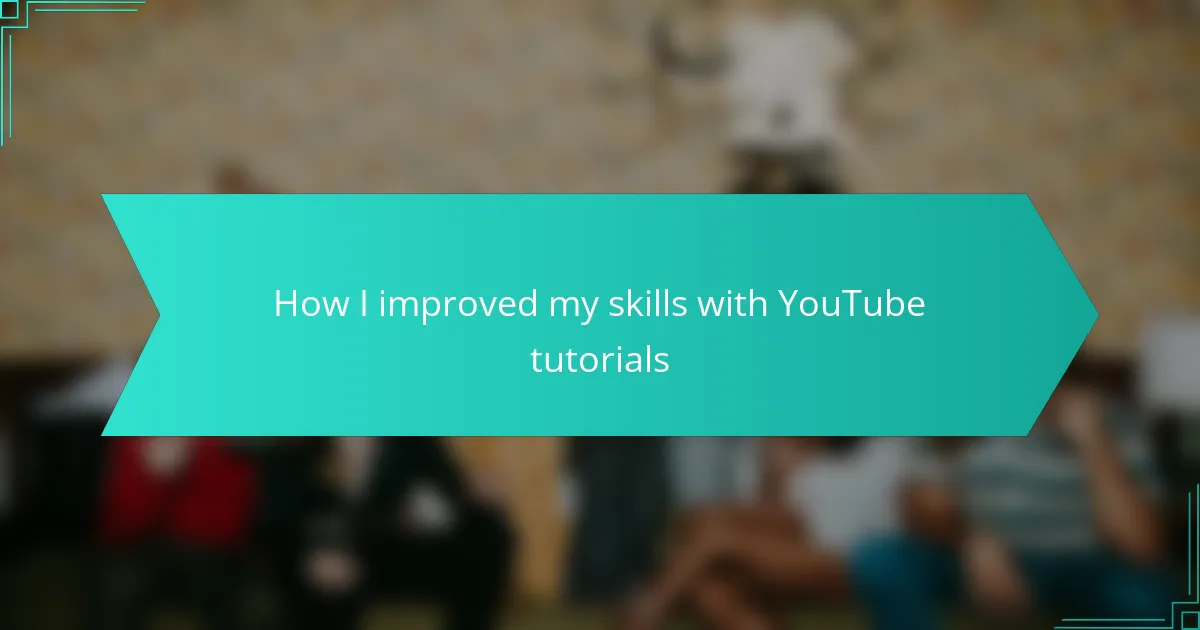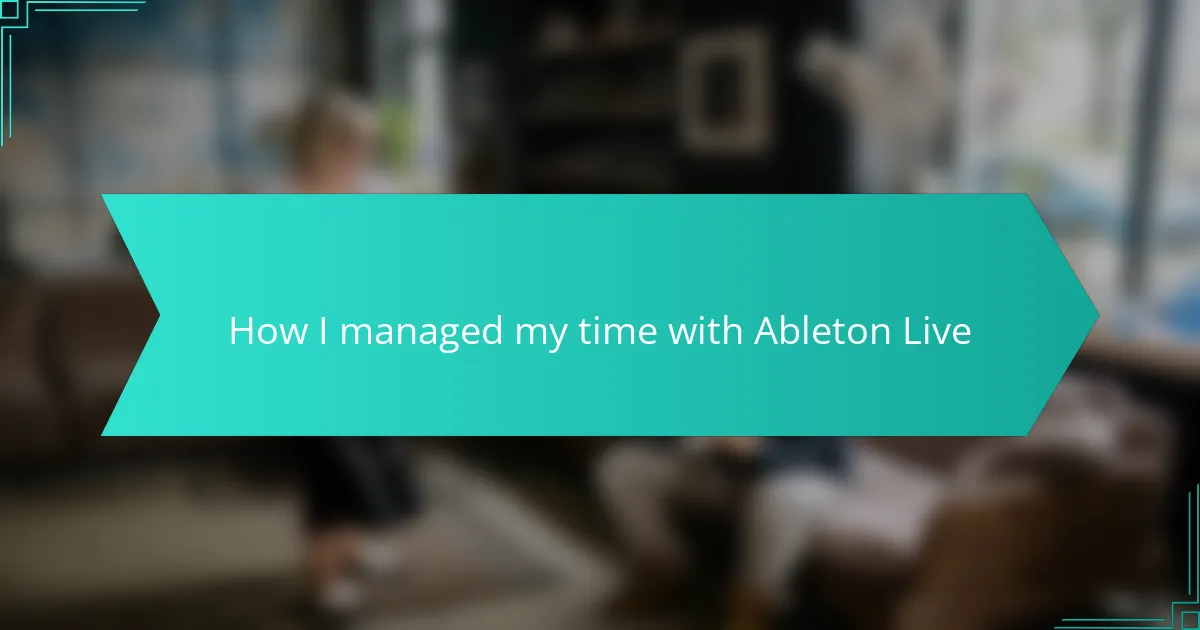Key takeaways
- Soundtrap enables real-time collaboration, allowing musicians from different locations to work together seamlessly.
- The platform is user-friendly, making it accessible for musicians of all skill levels to create and experiment easily.
- Effective collaboration is enhanced through clear communication, setting goals, and embracing feedback.
- Soundtrap’s vast library of loops and samples provides inspiration and helps discover new musical directions.
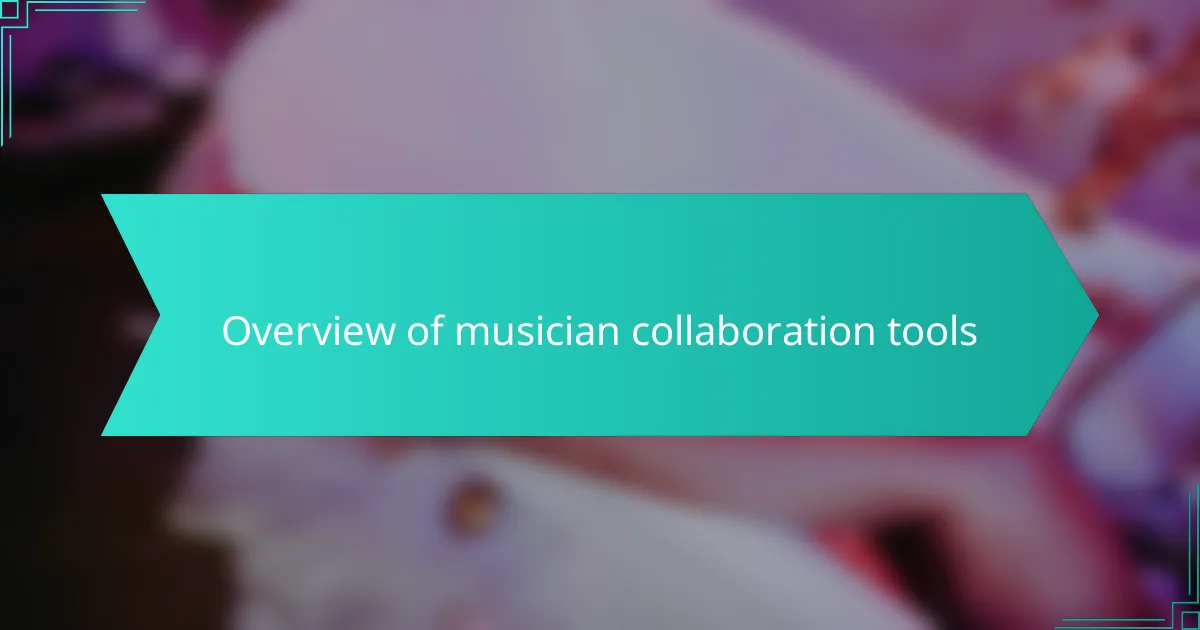
Overview of musician collaboration tools
When I think about musician collaboration tools, a variety of platforms come to mind, each designed to facilitate creativity and connection among artists. Tools like Soundtrap, BandLab, and Splice allow musicians to connect in real-time, overcoming geographical barriers that once limited collaboration. Have you ever felt that rush of inspiration while working with others online? It’s a truly unique experience.
One of the standout aspects of these tools is their ability to blend different creative processes. For example, I’ve used Soundtrap to collaborate with a friend across the country, and it was incredible to see how we could layer sounds and ideas instantly. The feedback loop is almost immediate, which makes the process feel dynamic and alive.
Moreover, the accessibility of these platforms makes it easier than ever for musicians of all levels to come together. As someone who has experienced the challenges of coordinating studio time, the convenience of online collaboration tools cannot be overstated. They not only foster creativity but also build a sense of community, something every musician craves. Isn’t that what music is all about?
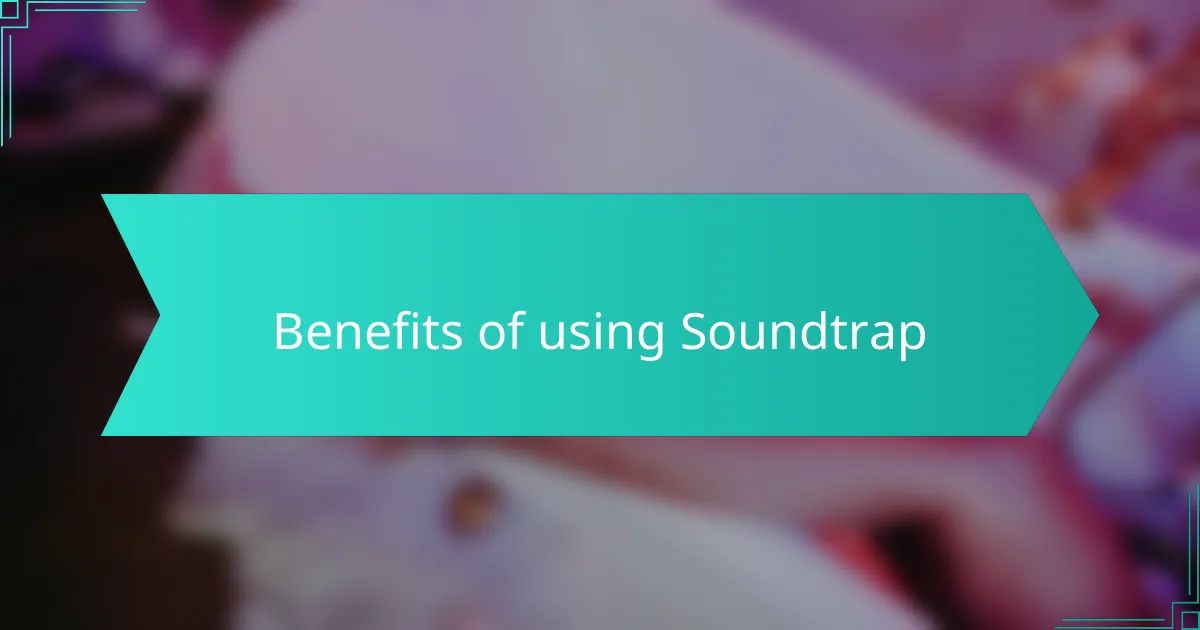
Benefits of using Soundtrap
One of the biggest benefits of using Soundtrap is its accessibility. As a cloud-based platform, it allows musicians to collaborate in real time, regardless of their location. I remember working on a project with a friend in another country, and we were able to fine-tune our music seamlessly as if we were in the same studio. This aspect not only saves time but also fosters creativity.
Another advantage is the user-friendly interface. Even if you’re not a tech whiz, you can easily navigate through the features. When I first started using Soundtrap, I was pleasantly surprised by how intuitive it was, enabling me to focus more on my music than on figuring out the software. It truly made the collaborative experience enjoyable and stress-free.
The platform also offers a range of tools for musicians, including a library of loops and instruments. This makes it easier to experiment with different sounds and styles without needing extensive equipment. In my case, I found that the variety helped me discover new musical directions I hadn’t considered before.
| Feature | Benefits |
|---|---|
| Real-time Collaboration | Work with others seamlessly from anywhere in the world. |
| User-Friendly Interface | Easy to navigate, allowing you to focus on creativity rather than technology. |
| Variety of Tools | A wide range of loops and instruments to explore new musical ideas. |
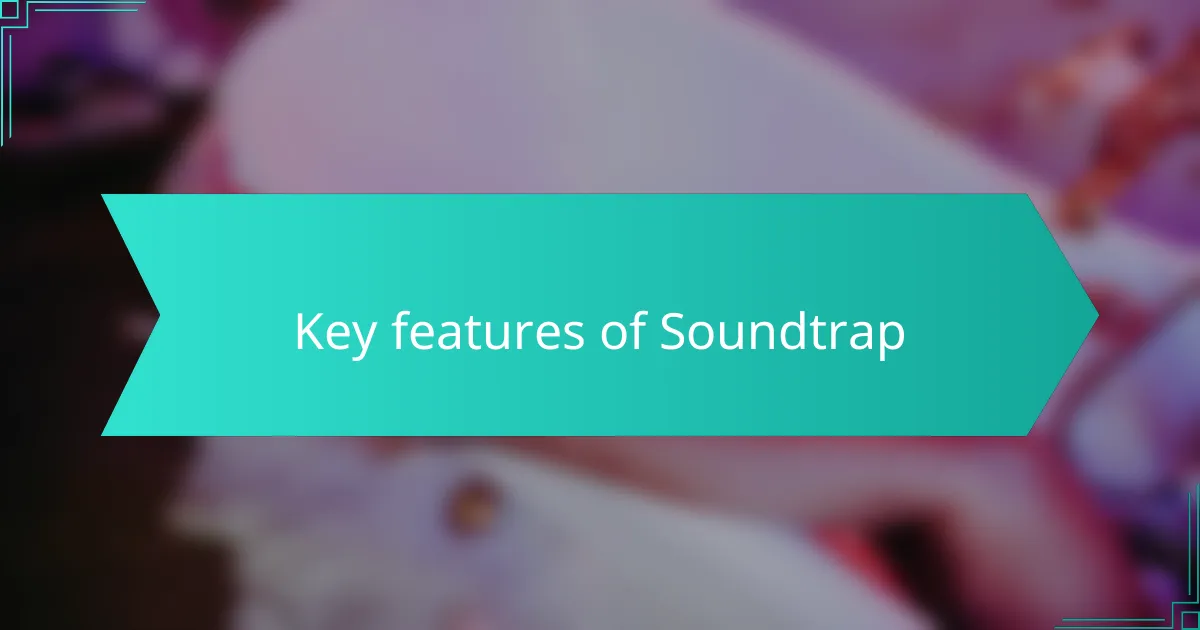
Key features of Soundtrap
When it comes to collaboration, Soundtrap shines with its browser-based platform that makes it accessible anywhere. The real-time audio editing feature allows musicians to tweak their projects simultaneously, making for an engaging and immersive experience. I remember a session where my bandmates and I were spread across different cities, yet we created a track together seamlessly – it felt almost magical.
Another standout feature is the vast library of loops and samples, which serves as an excellent resource for inspiration. I often find myself exploring different genres in Soundtrap’s library, which has sparked new ideas in my own music. Plus, the intuitive interface is user-friendly, making it easy even for those who might not be tech-savvy.
Lastly, Soundtrap’s capability to integrate with various platforms, like Spotify and YouTube, really enhances collaborative efforts. It makes sharing our final mixes a breeze, which is something I genuinely appreciate after spending hours crafting sound together.
| Feature | Description |
|---|---|
| Browser-based platform | Access anywhere without downloads |
| Real-time collaboration | Work on projects simultaneously |
| Library of loops and samples | Rich resource for musical inspiration |
| User-friendly interface | Intuitive design for all skill levels |
| Platform integration | Easily share mixes on Spotify and YouTube |
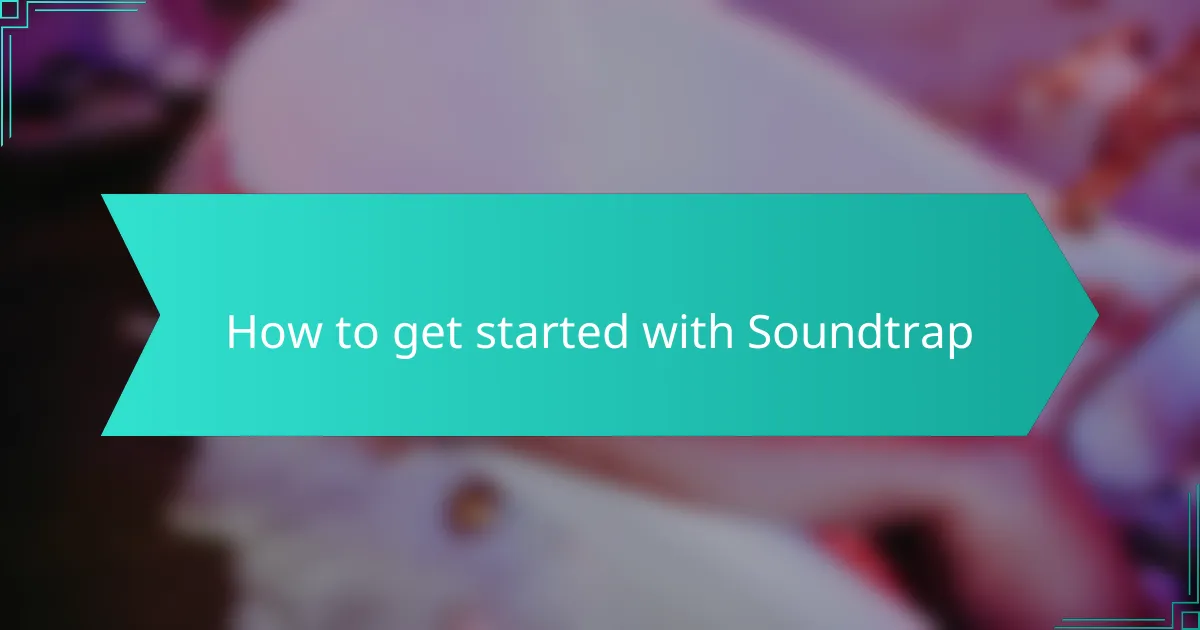
How to get started with Soundtrap
To get started with Soundtrap, you first need to sign up for an account, which is a straightforward process. I vividly remember when I took that first step; the excitement of opening the platform for the first time felt like unboxing a new musical toy. Once you’re in, you can create a new project with just a click, allowing you to dive right into your creative journey.
Navigating through Soundtrap’s features is surprisingly easy, even for those with minimal technical skills. I recall a moment when I was helping a friend who was a bit apprehensive about using technology. We explored the various tools together, and I was thrilled to see how quickly he started to experiment with tracks and loops. This user-friendly interface truly empowers musicians at any level to get their ideas flowing without the intimidation of complex software.
One amazing aspect is how you can invite collaborators right from your project dashboard. I remember inviting some fellow musicians to join in, and the thrill of seeing their avatars pop up as they worked on the track was so energizing. Have you ever experienced that buzz of collective creativity? It’s that instant connection that makes Soundtrap feel like a virtual jam session. Just imagine the possibilities waiting for you!
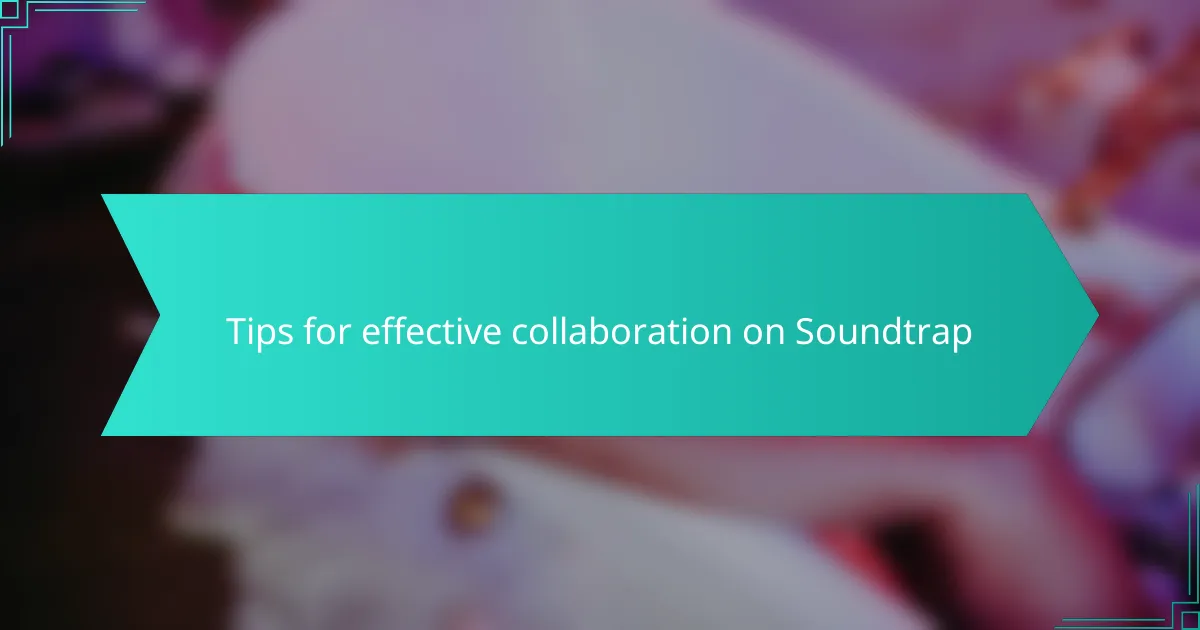
Tips for effective collaboration on Soundtrap
When collaborating on Soundtrap, communication is key. In my experience, I’ve found that discussing ideas openly fosters a sense of connection and creativity among team members. Whether it’s sharing your vision through voice notes or leaving comments on specific tracks, a clear dialogue enhances the collaborative experience.
Here are some tips to ensure effective collaboration on Soundtrap:
- Set Clear Goals: Before starting, agree on the song structure and what you aim to achieve together.
- Embrace Feedback: Be open to suggestions and constructive criticism; it can lead to unexpected improvements.
- Use Features Wisely: Take advantage of Soundtrap’s commenting feature to share thoughts directly on different sections of your project.
- Schedule Collaboration Sessions: Find common times to work together, whether virtually or in-person, to keep the momentum going.
- Share Inspiration: Share links to songs or artist influences that can shape the direction of your project.
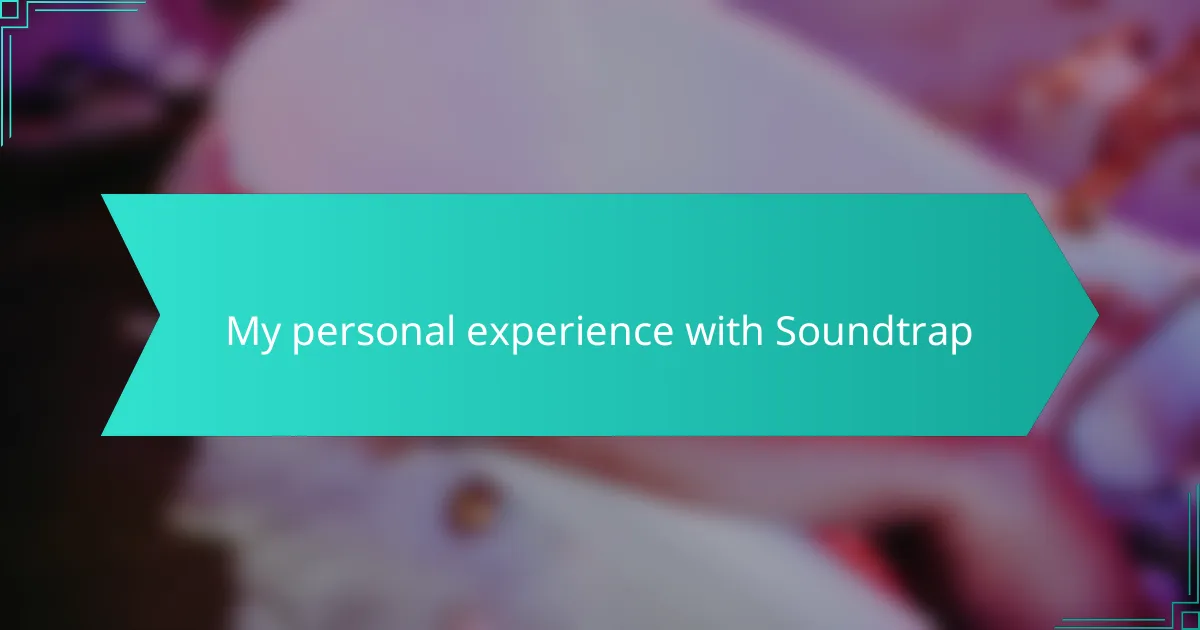
My personal experience with Soundtrap
I remember the first time I used Soundtrap for a collaboration; it felt like opening a door to a whole new world of creativity. I teamed up with a musician friend who lived across the country. We exchanged ideas in real-time, and I was enamored by how quickly we could build up our track without the usual logistical hassles of meeting in a studio.
One standout moment was when we both experimented with the library of loops available on Soundtrap. I was surprised to discover sounds that sparked memories and inspired new melodies. The thrill of trying different genres together was invigorating. Have you ever stumbled upon a sound that completely transforms your creative vision? That’s precisely what happened for us, and it was a turning point in our project.
During another session, I faced a technical glitch that momentarily stalled our progress. Instead of getting frustrated, we turned it into a fun challenge. We joked and brainstormed new ideas while waiting to resolve the issue. It’s moments like these that remind me how collaboration not only builds music but also strengthens friendships. Wouldn’t you agree that the journey of creating something together becomes just as important as the final product?
